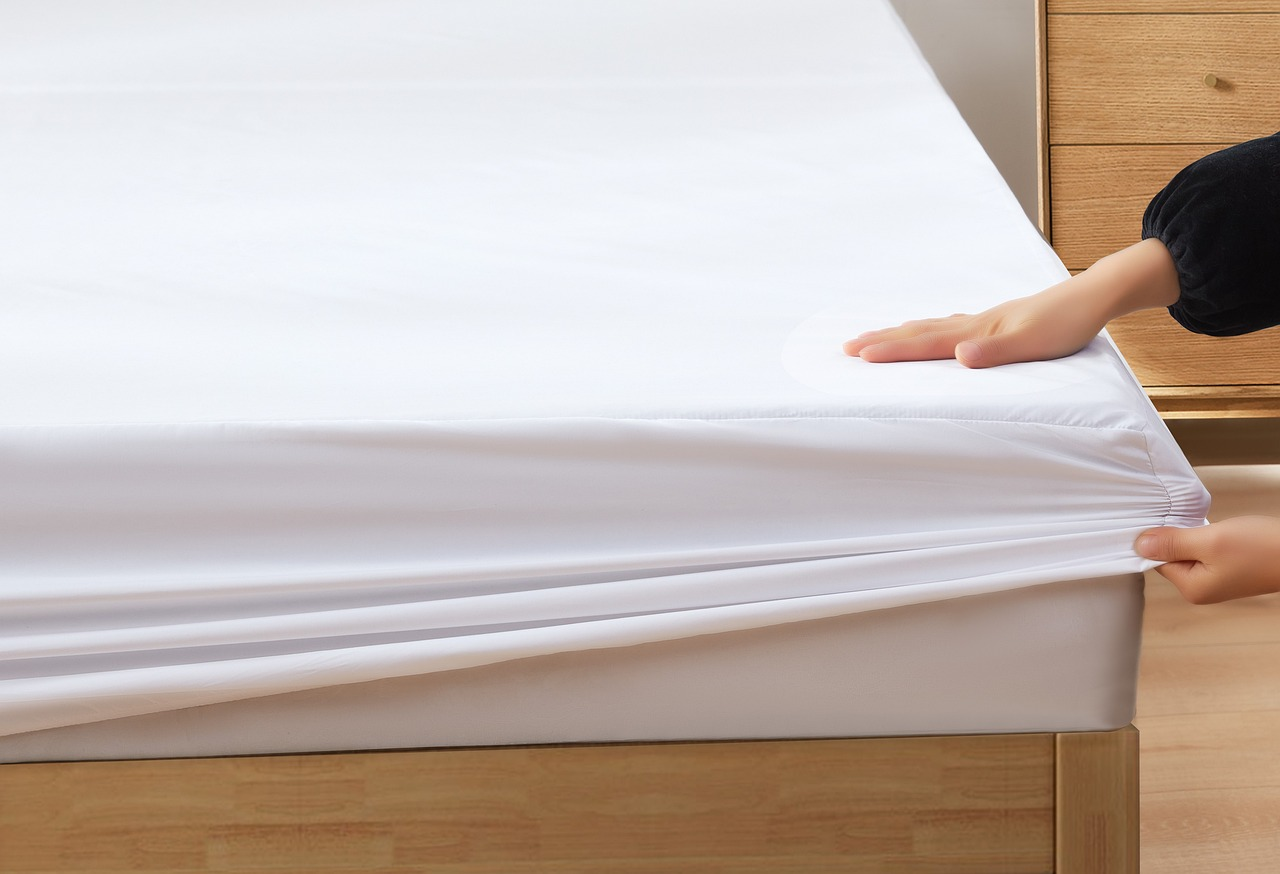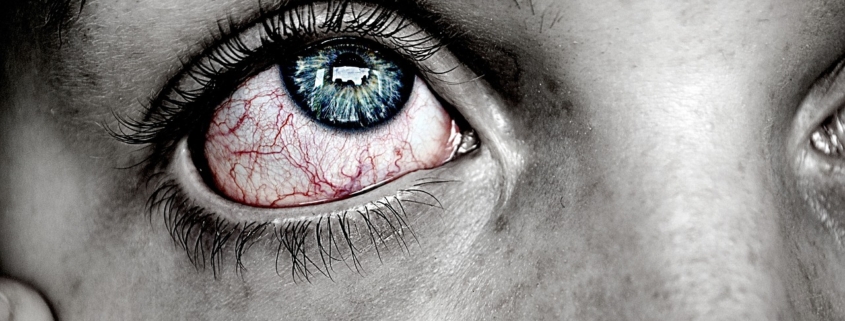4 Most Common Indoor Allergens & Easy Ways to Allergy-Proof Your Home
Do you suffer from year-round allergy symptoms, also called perennial allergies? If so, it may surprise you that indoor allergens could be the culprit. Instead of coming from the great outdoors, your allergies could be triggered by the air you breathe inside your home.
And you’re not alone. Up to 40 percent of the worldwide population is sensitive to foreign proteins in the indoor environment, such as animal dander and mold.
The good news is that there are simple steps you can take to make your home allergy-proof and create a healthy, safe, and comfortable living space.
In this blog post, we’ll explore the causes and symptoms of allergic reactions and delve into the most common indoor allergens. We’ll also provide tips and strategies to help you easily allergy-proof your home and minimize allergy symptoms.
- New Report Says Your Brain Could Be the Key to Reducing Phlegm Over 50
- Doctor's "Leave The Throat Phlegm Behind" Tutorial Goes Viral With People Over 50
- Can You Relieve Throat Phlegm and Coughing In 60 Seconds A Day? This Doctor Says Yes
- How To Banish Phlegm When 50+ (Do This Every Day)
Key Takeaways
- Perennial allergies can be caused by indoor allergens such as pet dander, mold, and dust mites.
- Symptoms of indoor allergies can include sneezing, coughing, itchy eyes, and congestion.
- Regular cleaning and maintenance and proper ventilation can help reduce indoor allergens in your home.
What causes an allergic reaction?
Allergic reactions are triggered by the immune system. When a person allergic to a harmless substance, such as dust, mold, or pet dander, comes into contact with it, the immune system may panic inappropriately. Mistakenly thinking the substance is harmful, it produces antibodies that attack the allergen.
While trying to remove the allergen, the antibodies trigger the release of histamine, a chemical that causes well-known allergy symptoms, such as runny nose, sneezing, and coughing.
The severity of an allergic reaction varies from person to person, with symptoms ranging from minor irritation to a severe, life-threatening condition called anaphylaxis.
Indoor Allergens Symptoms
Indoor allergy symptoms are much like other allergies and include:
- Runny nose
- Sore throat
- Stuffy nose that may itch
- Sneezing
- Coughing
- Wheezing
- Itchy or watery eyes
- Chest tightness
- Skin rashes (hives)
- Congestion
- Fatigue

Common Indoor Allergens and Tips for Avoiding Exposure
If you have indoor allergies, you must improve indoor air quality by using an air purifier, HEPA filter in your HVAC system, and dehumidifier if necessary. These and other tips for avoiding allergen exposure are detailed below.
1. Animal Dander
Pet allergens, primarily proteins found in a pet’s saliva, urine, and dander, can trigger allergic reactions or worsen asthma symptoms in some individuals.
It is a fact that dog allergies are a common cause of asthma and allergic rhinitis, also known as hay fever, all over the world. It affects around 5 to 10 percent of the adult population, as reported in studies (5). Similarly, allergies to cats affect around 7 to 25 percent of the population (6).
Typical allergic responses include:
- Sneezing
- Runny nose
- Congestion
- Puffy, watery or itchy eyes
- Facial pain from nasal congestion
- Frequent throat clearing from excess mucus production

Pet dander can be found in any household, even without pets, due to allergens tracked inside clothing and belongings.
Tips for reducing pet dander include:
- Avoiding contact with dogs or cats, if possible.
- Bathing and brushing your pet regularly, preferably by one who does not have a pet allergy.
- Keeping pets off of your bed, sleeping area, and furniture.
- Vacuuming your carpets and rugs daily with a vacuum equipped with a HEPA filter. The vacuum cleaner must expel all air through the HEPA filter, with none escaping it.
- Using an air purifier
2. Dust Mites
Dust mites belong to the same family of arachnids as spiders and ticks. However, unlike their relatives, they do not bite humans. Instead, they feed on microscopic skin scales and fungi found in things like carpets, bedding, furniture, etc.
Dust mites are a significant cause of allergies worldwide. People allergic to dust mites may experience various symptoms after inhaling dust mite particles (2). About 10 percent of the world’s population is estimated to be allergic to dust mites. The number is much higher in some regions, where up to 90 percent of people with allergic asthma are sensitized to these tiny creatures (3). Exposure to significant levels of dust mites also increases the risk of developing asthma by five times (4).

Tips for reducing dust mites include:
- Using a dehumidifier or air conditioner to reduce humidity
- Vacuuming the carpet frequently
- Covering mattresses and pillows with dust mite covers
- Washing your bedding in hot water frequently, at least once a week
- Eliminating or significantly reducing the amount of carpeting and rugs in your home
- Regularly using an air purifier with a HEPA filter
3. Cockroaches
Cockroaches are prevalent in many parts of the world, especially in warmer regions. Cockroaches are a common source of allergens due to a protein in their bodies, saliva, and waste. Even dead cockroaches can trigger allergic reactions.
Indeed, research has established a strong connection between cockroach allergy, asthma, and allergic rhinitis (hay fever). (6)
Moreover, cockroach allergy is a crucial risk factor for hospital admissions and emergency room visits and a significant cause of asthma-related symptoms (7, 8).

Tips for reducing cockroach infestation include:
- Storing food properly with tight lids
- Keeping a tight lid on trash cans and taking the trash out promptly
- Cleaning house regularly
- Sweeping the kitchen floor regularly and disposing of food crumbs
- Washing the dishes after every meal
- Removing clutter from the floor, which deprives cockroaches of hiding places
- Fixing sources of dampness, such as leaking faucets, roofs, etc.
- Calling an exterminator to get rid of cockroaches.
- Sealing all cracks or holes in the walls, floors, utility pipes, baseboards, and crawl spaces as they are a cockroach’s favorite entry point.
4. Mold Spores
Molds and fungi reproduce and spread through spores released into the air. When these spores are inhaled, they can cause allergic reactions. It is possible to be allergic to both indoor and outdoor molds.
Indoor mold allergies can cause symptoms all year round. You will most likely encounter these spores in areas prone to dampness or water damage, such as the kitchen or bathroom.
Out of over 1 million species of fungi, around 80 have been linked to respiratory allergies (9). When someone is exposed to mold, it can cause allergic rhinitis, commonly known as hay fever. In addition to this, mold allergy considerably increases the risk of developing upper and lower respiratory diseases like asthma (10, 11).
Mold sensitization is a global problem estimated to affect around 3 to 10 percent of the population (12). However, people with asthma are more susceptible to mold allergy, with prevalence estimates reaching as high as 80 percent (13).

Tips for reducing mold spores include:
- Using an air conditioning system or dehumidifier to reduce the humidity in your home
- Installing a HEPA filter in your HVAC system and replacing the filter regularly
- Cleaning up spilled water and fixing plumbing leaks
- Using exhaust fans while cooking or bathing to reduce humidity
- Opening windows and doors to ventilate your home
- Avoiding the ongoing presence of wet laundry, carpets, or bedding. It would be best if you dried it promptly to avoid mold growth.

Indoor Allergens Diagnosis
If you suspect indoor allergies, seeking help from an allergist may significantly improve your quality of life. The first step for an allergist is to perform tests to identify the allergens causing your symptoms. After that, they will work with you to develop a personalized treatment plan to control your symptoms and allow you to live symptom-free.
Summary
It is quite common for people to suffer from indoor allergies, which can cause severe and sometimes incapacitating symptoms. However, by taking small measures to reduce the amount of allergens in your home and working with your healthcare provider to manage your symptoms, you can greatly enhance your quality of life.
Frequently Asked Questions
What are the common indoor allergens?
The most common indoor allergens are dust mites, animal dander, and mold spores,
What are the symptoms of indoor allergies?
The symptoms of indoor allergies are similar to seasonal allergies and include sneezing, runny nose, coughing, wheezing, sore throat, itchy or watery eyes, and congestion.
What in my room can contain indoor allergens?
Bedding, pillows, curtains/drapes, and carpeting can attract and trap allergens like dust mites or pet hair, triggering allergy and asthma symptoms. You should wash your bedding, carpets, and other fabric surfaces regularly to reduce the risk of allergens accumulating. Regularly cleaning your house, including cloth couches, chairs, and drapes, is essential to ensure it remains allergens-free.
Are indoor allergens seasonal?
Indoor allergies can be a constant issue, but they tend to become more noticeable during winter when you spend most of your time indoors. Moreover, because of the cold weather, you tend to shut your doors and windows, which traps allergens inside and exacerbates the problem.
- New Report Says Your Brain Could Be the Key to Reducing Phlegm Over 50
- Doctor's "Leave The Throat Phlegm Behind" Tutorial Goes Viral With People Over 50
- Can You Relieve Throat Phlegm and Coughing In 60 Seconds A Day? This Doctor Says Yes
- How To Banish Phlegm When 50+ (Do This Every Day)
References
1- https://www.aaaai.org/About/News/For-Media/Allergy-Statistics
2- https://pubmed.ncbi.nlm.nih.gov/27184001/
3- https://acaai.org/resources/tools/home-allergy-management
4- https://www.ncbi.nlm.nih.gov/pmc/articles/PMC2975603
5- https://onlinelibrary.wiley.com/doi/10.1111/all.12130
6- https://pubmed.ncbi.nlm.nih.gov/27184001/
7- http://www.eaaci.org/documents/Molecular_Allergology-web.pdf
8- https://www.ncbi.nlm.nih.gov/pmc/articles/PMC2975603
9- https://medcraveonline.com/MOJI/MOJI-02-00045.pdf
10- https://www.mayoclinic.org/diseases-conditions/mold-allergy/symptoms-causes/syc-20351519
11- https://medcraveonline.com/MOJI/MOJI-02-00045.pdf
12- https://www.ncbi.nlm.nih.gov/pmc/articles/PMC4397360/
13- https://www.karger.com/Article/FullText/107578
Dr. Matthew Olesiak, MD, is the Chief Medical Director at SANESolution, a renowned wellness technology company dedicated to providing evidence-based solutions for optimal living. Dr. Olesiak earned his medical degree from the prestigious Jagiellonian University Medical College in Kraków, Poland, where he developed a strong foundation in medicine.





